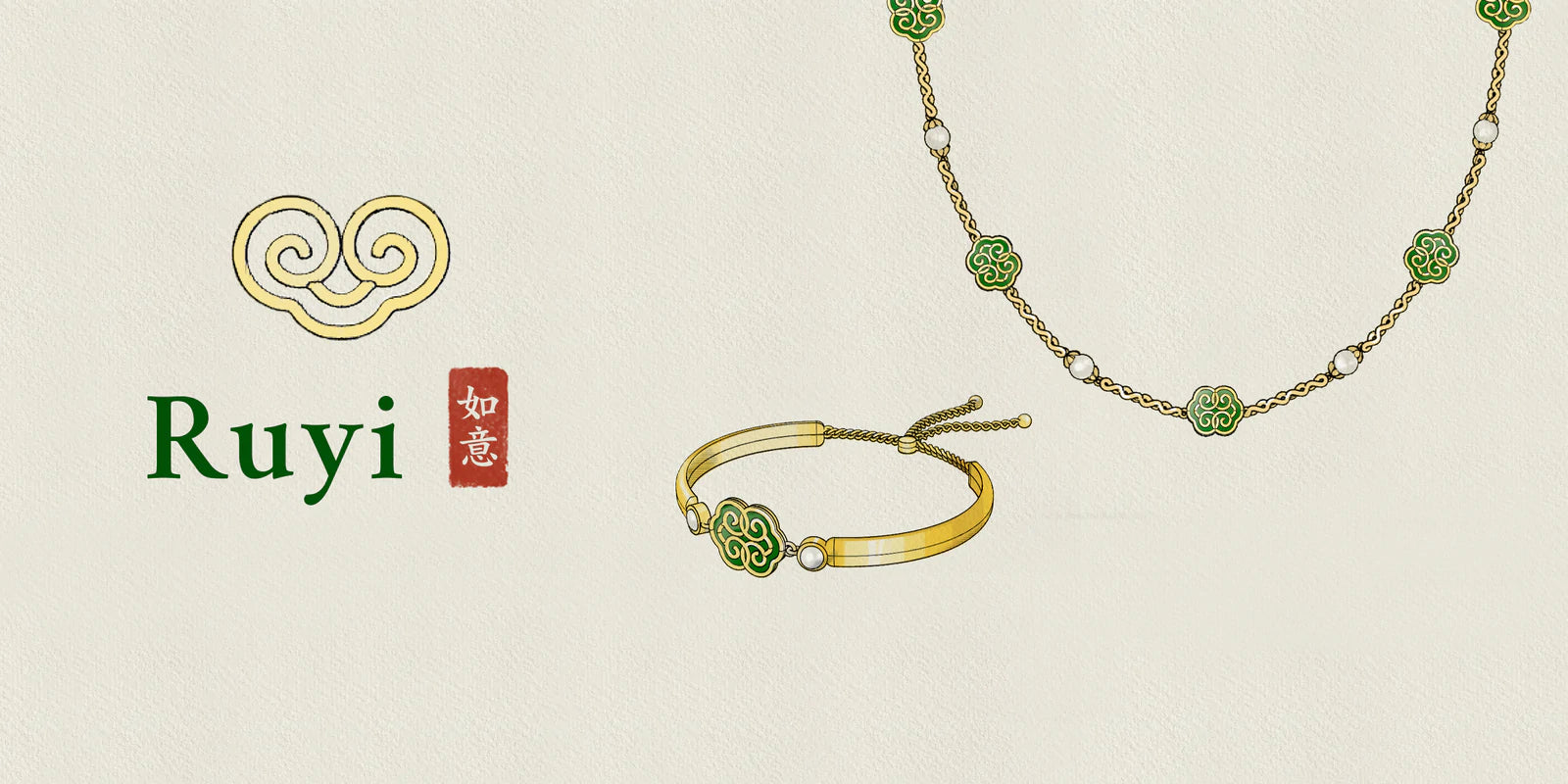
The Ruyi: More Than Just a Pattern
Evan Mantyk and Natasha Stevanovic, Contributing Writers
Perhaps you’ve noticed a recurring pattern in many classical Chinese designs. It’s also found on some of Shen Yun’s intricately patterned costumes and in our Shen Yun Shop product designs. This pattern is known as the ruyi and it carries deep and rich cultural meaning.
What is the Ruyi?

The ruyi is an ancient Chinese symbol and has many variations. Most ruyi have two swirls curling inward with a point opposite the curls, as shown on the right. Some ruyi have a curve rather than a point. Our Ruyi Collection features a double ruyi with a curved base.
The word ruyi itself comes from the two characters rú (如) and yì (意), and together they literally mean “as one wishes.” However, that is only the surface meaning—the inner meaning has been enriched over thousands of years of Chinese history.
The History of the Ruyi
At the beginning of Chinese civilization almost 5,000 years ago, the Yellow Emperor reigned. He is the earliest known Chinese monarch and is considered the forefather of the Han Chinese (the largest ethnic group in China). During his reign, the Yellow Emperor faced Chi You, a powerful adversary known for his military might. It is said that the Yellow Emperor wielded a legendary sword, and after winning an epic battle against Chi You, he named his weapon “Ruyi,” implying that, literally “as wished” (rúyì), he was victorious in protecting the nation and establishing a culture that would last up to the present.
By the Tang Dynasty (618-917 AD), the ruyi had come to be a rich symbol of power, peace, and happiness for the Chinese people. In ancient paintings and sculptures, emperors and Buddhist saints can be seen holding a scepter, also called a ruyi, that has a ruyi shape at its top. The mythical Monkey King from Journey to the West, is also known for carrying a magical staff called Ruyi Golden Hoop Staff (如意金箍棒). He used it to fulfill his wish of protecting his master, the Tang monk, on their quest to bring back Buddhist scriptures from India.
Over time, the ruyi grew in popularity, becoming a favorite gift among the nobility and royalty. A ruyi staff was often carved in gold, jade, stone, bamboo, or ox tail and given on a special occasion.
By the end of the Qing Dynasty, in the 20th century, the ruyi was seen almost everywhere: from the bricks and stones in the imperial palace to the intricate ceramics used as home décor in the Forbidden City, and from the heavy copper shields and battle axes to the stitching on household linens. Each variation of the symbol was given its own special meaning and brought an additional touch of beauty to vases, shoes, jewelry boxes, and plates.
The Ruyi Today
Today the word “ruyi” is found in many Chinese greetings, especially those used during the Chinese New Year, including “wànshì rúyì” (萬事如意), “jíxiáng rúyì” (吉祥如意),”xìngfú rúyì” (幸福如意)—which translate to “all the best” “good luck” and “best wishes.”
The ruyi symbol is special in that it has lasted from the first dynasty until now. Over the course of Chinese history, many dynasties have come and gone, each with their own unique traditions, customs, and way of life. Often with a change of dynasty, any traditions or customs that are not deeply rooted are lost or forgotten. Yet the ruyi has become deeply embedded over time, with each dynasty having its own variation of the ruyi symbol and its own interpretation of its meaning. It has even spread to nearby countries like Mongolia.
Shen Yun Performing Arts often features the ruyi pattern on the costumes of certain dances, such as Mongolian and Manchurian, that continue the tradition of ruyi in their culture.
Inspired by the variation of the ruyi symbol as depicted on Shen Yun’s costumes, the Shen Yun Shop continues this grand and beautiful tradition with its Ruyi Collection. This stunning collection features 18k gold-plated earrings, necklaces, a bracelet, and a ring—all adorned with a cloud-shaped double ruyi that emanates a sense of peace, power, and happiness. Most pieces are paired with freshwater pearls to accentuate their purity and preciousness.
Carry this precious tradition of ruyi with you wherever you go. May your endeavors bring good fortune and go exactly “as wished!”







